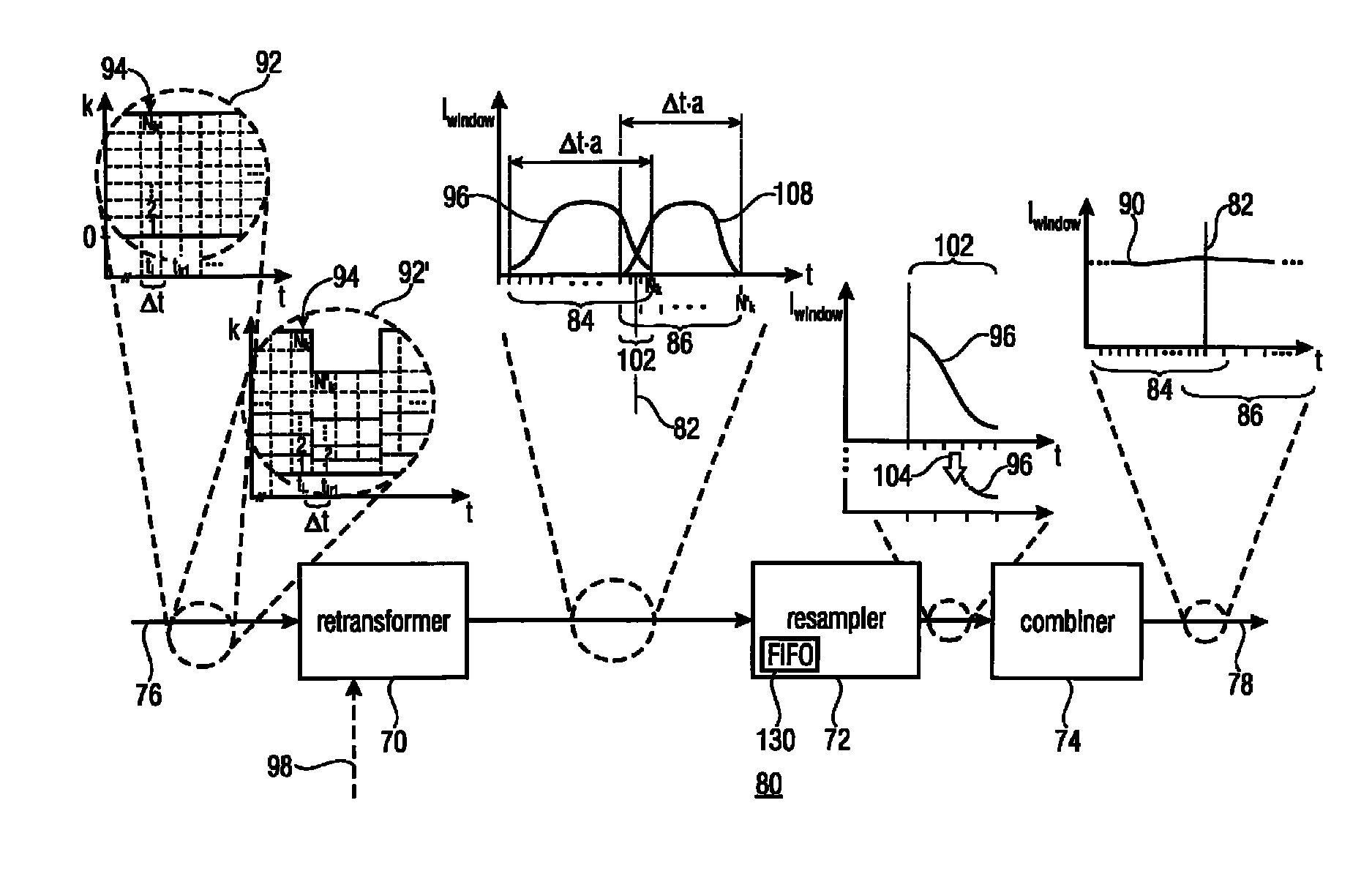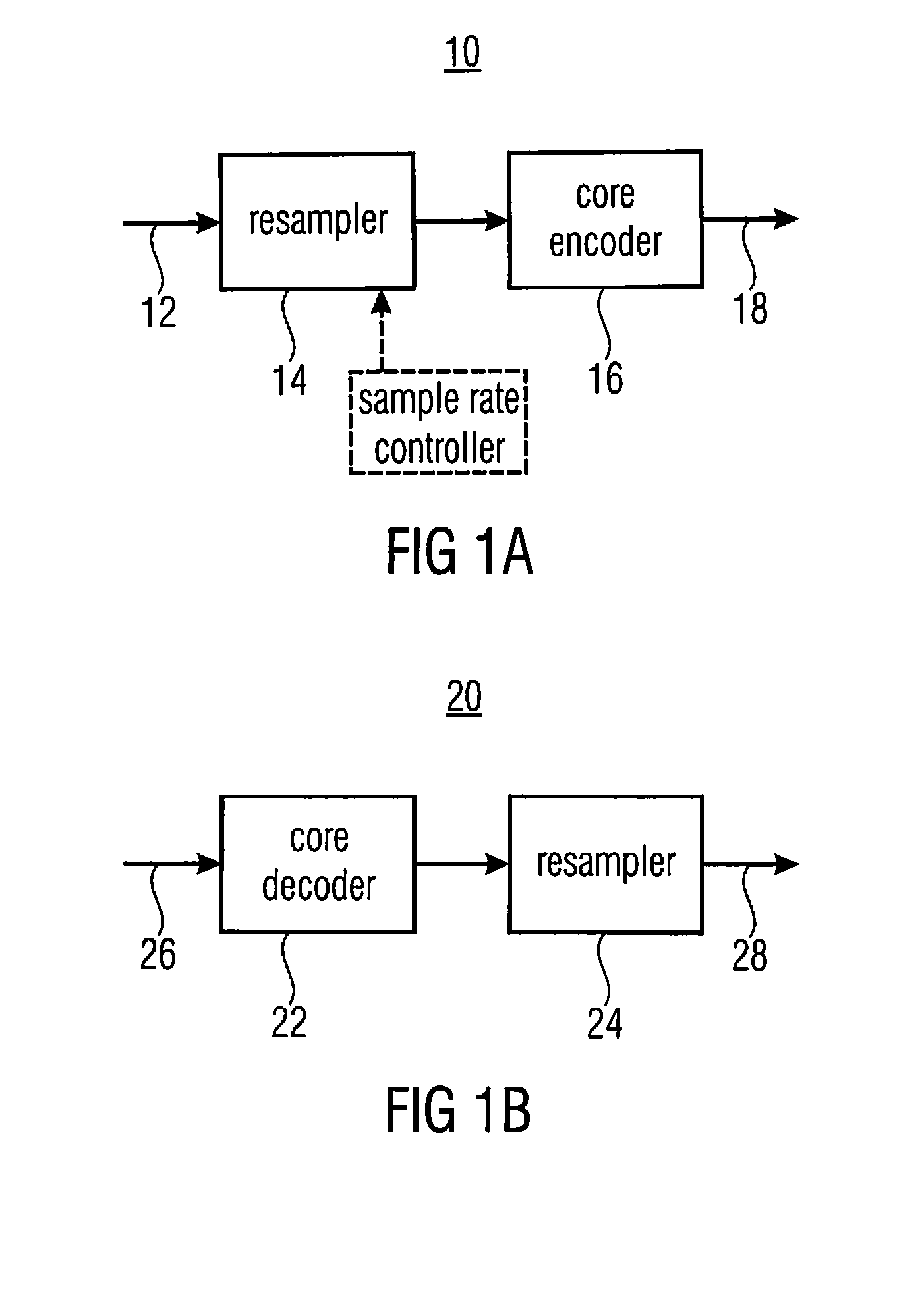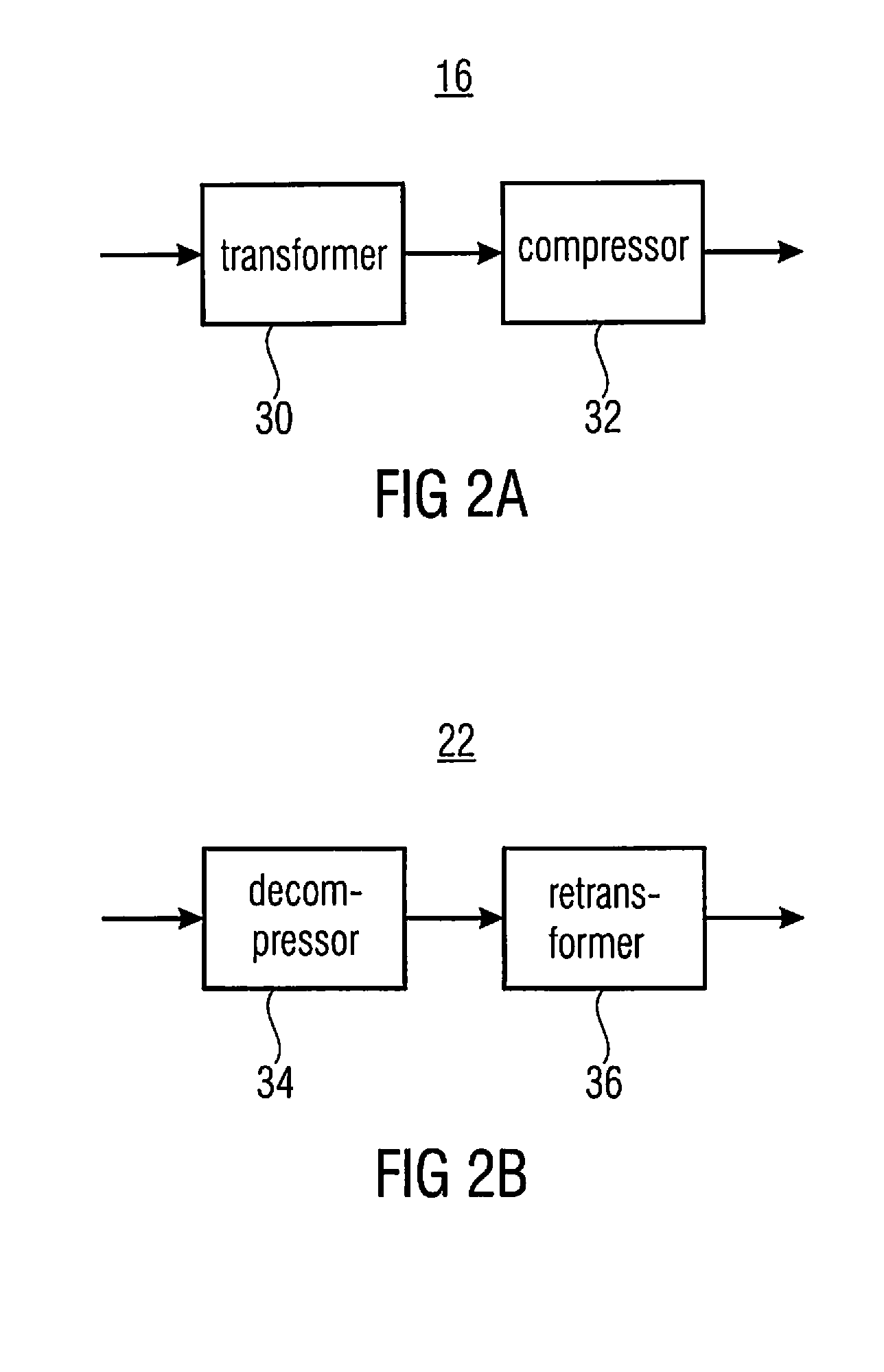Information signal representation using lapped transform
a technology of information signal and transform, applied in the direction of speech analysis, sound producing devices, ear treatment, etc., to achieve the effect of high coding efficiency, efficient use of lapped transform representation, and efficient traversal
- Summary
- Abstract
- Description
- Claims
- Application Information
AI Technical Summary
Benefits of technology
Problems solved by technology
Method used
Image
Examples
Embodiment Construction
[0028]In order to motivate the embodiments of the present invention further described below, preliminarily, embodiments are discussed within which embodiments of the present application may be used, and which render the intention and the advantages of the embodiments of the present application outlined further below clear.
[0029]FIGS. 1a and 1b show, for example, a pair of an encoder and a decoder where the subsequently explained embodiments may be advantageously used. FIG. 1a shows the encoder while FIG. 1b shows the decoder. The information signal encoder 10 of FIG. 1a comprises an input 12 at which the information signal enters, a resampler 14 and a core encoder 16, wherein the resampler 14 and the core encoder 16 are serially connected between the input 12 and an output 18 of encoder 10. At the output 18 encoder 10 outputs the data stream representing the information signal of input 12. Likewise, the decoder shown in FIG. 1b with reference sign 20 comprises a core decoder 22 and ...
PUM
 Login to View More
Login to View More Abstract
Description
Claims
Application Information
 Login to View More
Login to View More - R&D
- Intellectual Property
- Life Sciences
- Materials
- Tech Scout
- Unparalleled Data Quality
- Higher Quality Content
- 60% Fewer Hallucinations
Browse by: Latest US Patents, China's latest patents, Technical Efficacy Thesaurus, Application Domain, Technology Topic, Popular Technical Reports.
© 2025 PatSnap. All rights reserved.Legal|Privacy policy|Modern Slavery Act Transparency Statement|Sitemap|About US| Contact US: help@patsnap.com



